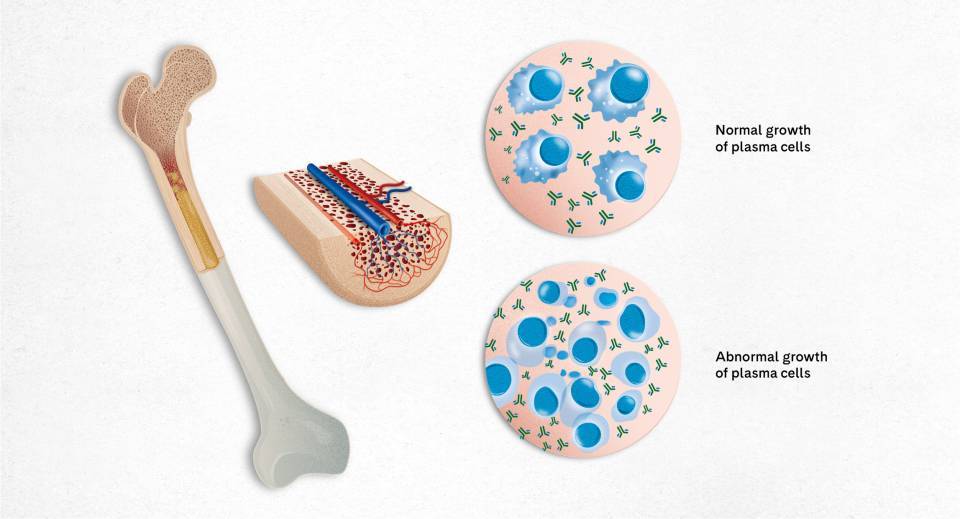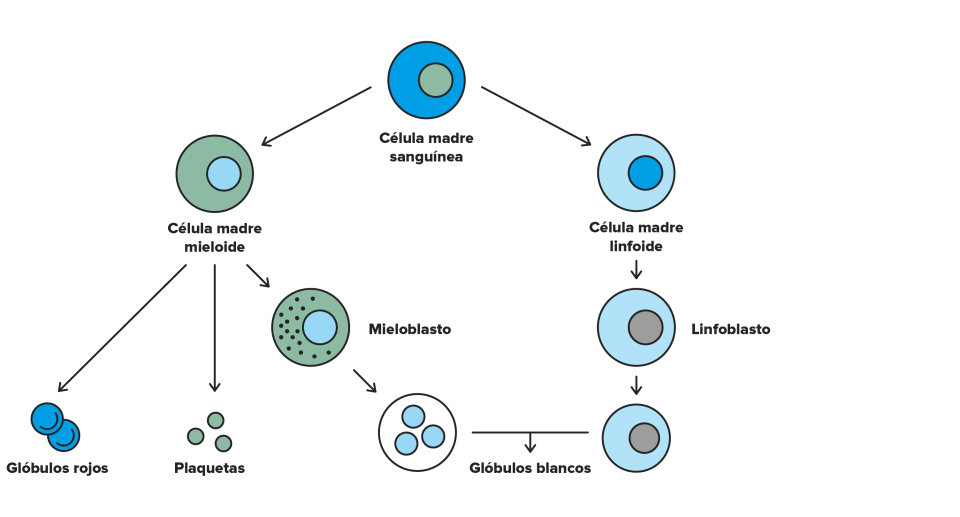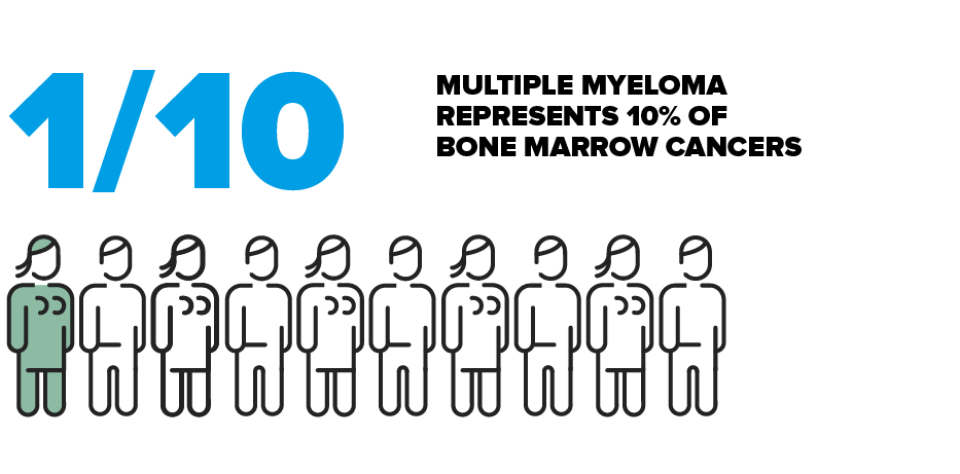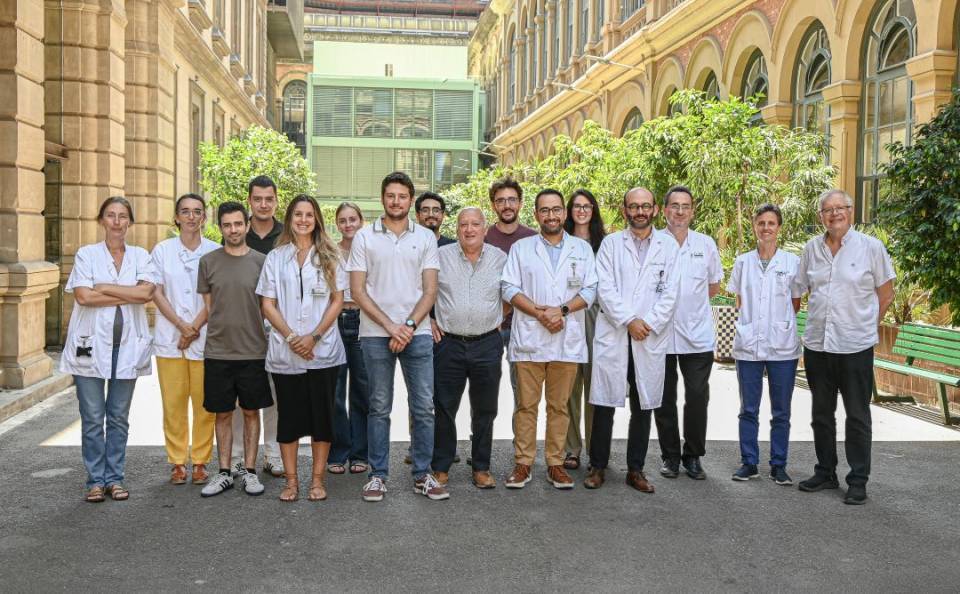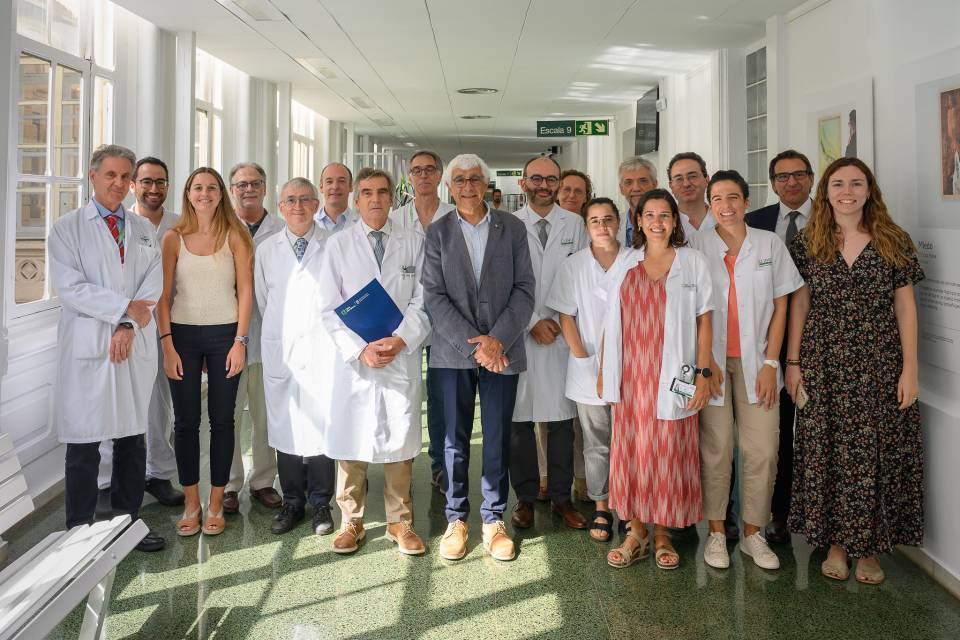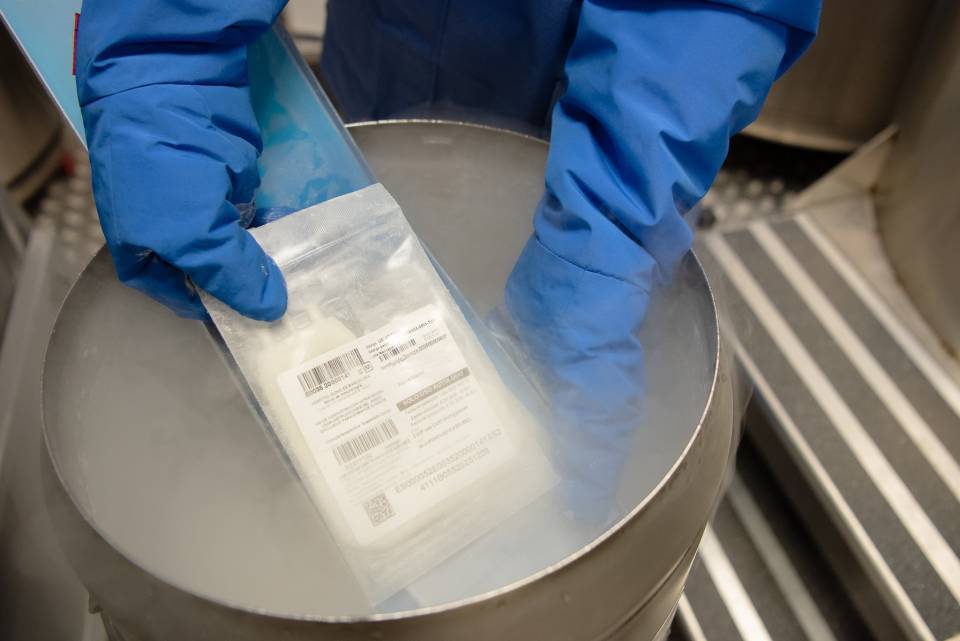- What is it?
- Causes and risk factors
- Signs and symptoms
- Tests and diagnosis
- Treatment
- Evolution of the disease
- Living with the disease
- Research lines
- Frequently asked questions
-
La enfermedad en el Clínic
- Team and structure
What is Multiple Myeloma?
Multiple myeloma is a type of cancer of the blood that affects the bone marrow. It is a relatively common disease as it represents 10–15% of all haematological cancers. Although it is generally considered an incurable disease, it is an area that has seen a lot of new medicines developed to improve patient quality of life and to try to convert it into a chronic disease.
Multiple Myeloma explained in first person
Myeloma is one of the diseases where a lot of new medicines have been developed which can help improve patients’ quality of life, get better responses and help patients live much longer.
There are quite a lot of treatments to deal with this disease, but they’re complicated, and not a final cure, but they help you stay alive.
Multiple myeloma is a kind of blood cancer that develops in the bone marrow where plasma cells (a type of white blood cell) are found. The normal function of plasma cells is to synthesise proteins known as antibodies which help fight off infectious diseases. In multiple myeloma, however, plasma cells undergo abnormal growth and form tumours in different areas of the bones.
What is bone marrow?
With multiple myeloma the disease is principally located in the bone marrow.
Bone marrow is the spongy, soft tissue found in the interior of long or flat bones, e.g., the hips, sternum, ribs and the skull. It is comprised of immature cells, known as haematopoietic stem cells or haematopoietic progenitor cells, that are capable of regenerating themselves, i.e., they can produce more stem cells and divide to create different types of cell found in the blood (haematopoiesis): red blood cells, white blood cells and platelets.
The blood cells produced by haematopoietic stem cells are:
- Red blood cells (erythrocytes). These transport oxygen from the lungs to the body’s tissues and then remove carbon dioxide from the tissues and eliminate it through respiration.
- White blood cells (leucocytes). White blood cells defend the body against external agents, such as bacteria and viruses, or internal agents and cancer cells. There are different types of leucocyte – neutrophils, eosinophils, monocytes, basophils and lymphocytes – and each fulfils a different function.
- Platelets. These are aggregates that control and prevent bleeding.
Myeloma cells reduce calcium production and lead to bone loss (osteoporosis), increase the level of calcium in the blood (hypercalcaemia), and produce small, local, hole-like lesions (osteolytic lesions).
In some patients the disease emerges beyond the bone marrow and causes bone tumours (plasmocytomas) or is spread through the blood. There are also rare cases in which the plasma cells leave the bone marrow and circulate in the bloodstream. This disease is known as plasma cell leukaemia and it represents a more aggressive form of multiple myeloma.
Antibodies
Antibodies, also known as immunoglobulins, are proteins circulating in the bloodstream that the immune system activates to fight against antigens (bacteria, viruses or allergens). There are different types of antibody for each antigen, i.e., the antibody for one disease is different from that for another disease.
In the case of autoimmune diseases the body creates antibodies that attack its own tissues because it identifies otherwise healthy organs as foreign bodies.
There are five types of antibody:
- Immunoglobulin A (IgA). This is one of the main antibodies. Found in high concentrations in the mucous membranes lining the respiratory and gastrointestinal tracts, in saliva and in tears.
- Immunoglobulin G (IgG). This is the most abundant antibody found in bodily fluids; it protects against viral infections and bacteria.
- Immunoglobulin M (IgM). Mainly found in the blood and lymph fluid. This is the first antibody produced by the body in order to fight off an infection.
- Immunoglobulin E (IgE). Immunoglobulin E is associated with allergic reactions or parasitic infections and is found in the lungs, skin and mucous membranes.
- Immunoglobulin D (IgD). Small amounts are present in the blood, but we do not know much about its biological function.
Types of multiple myeloma
The different subtypes of myeloma are classified according to the type of immunoglobulin or protein produced by the myeloma cells.
Different immunoglobulins normally have different functions in the body. Each immunoglobulin has two heavy and two light chains. There are five different types of heavy chain and two types of light chain. The type of multiple myeloma is determined through a technique called immunofixation which analyses blood and urine samples to identify both the heavy (IgG, IgA, etc.) and light chains (kappa or lambda).
Approximately 65% of patients present IgG myeloma with either kappa or lambda light chains, while the second most common type is IgA with either of the light chains. IgD, IgE and IgM myelomas are fairly rare.
How many people does multiple myeloma affect?
Multiple myeloma corresponds to 10% of all bone marrow cancers. Myeloma is the second most common blood cancer and affects thousands of people across the world. It most typically develops in people aged 65–70 years. Multiple myeloma has a slightly higher incidence in men than in women. People of African descent present the highest risk of developing myeloma, while Asians have the lowest risk.
Substantiated information by:


Published: 20 February 2018
Updated: 20 February 2018
Subscribe
Receive the latest updates related to this content.
(*) Mandatory fields
Thank you for subscribing!
If this is the first time you subscribe you will receive a confirmation email, check your inbox
